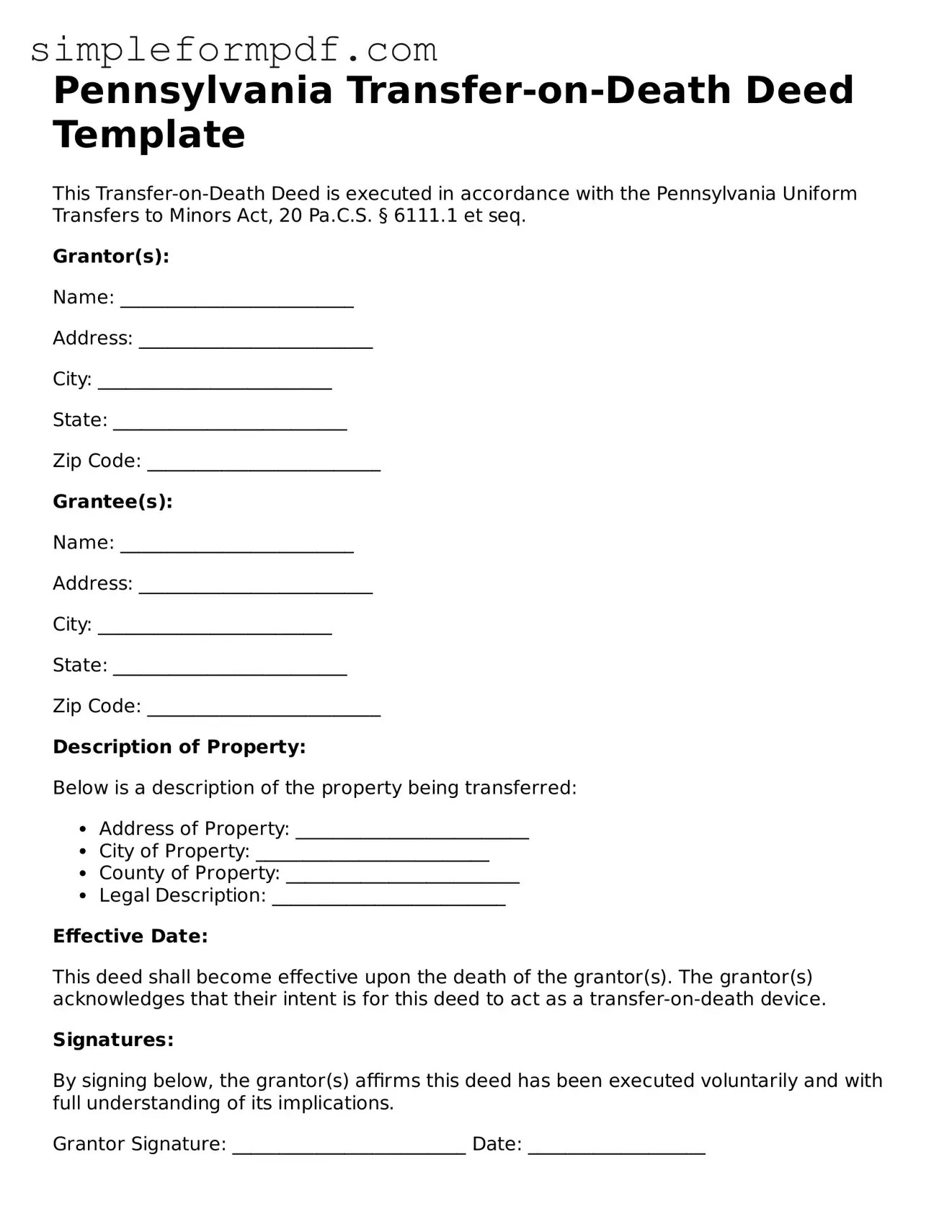Pennsylvania Transfer-on-Death Deed Template
This Transfer-on-Death Deed is executed in accordance with the Pennsylvania Uniform Transfers to Minors Act, 20 Pa.C.S. § 6111.1 et seq.
Grantor(s):
Name: _________________________
Address: _________________________
City: _________________________
State: _________________________
Zip Code: _________________________
Grantee(s):
Name: _________________________
Address: _________________________
City: _________________________
State: _________________________
Zip Code: _________________________
Description of Property:
Below is a description of the property being transferred:
- Address of Property: _________________________
- City of Property: _________________________
- County of Property: _________________________
- Legal Description: _________________________
Effective Date:
This deed shall become effective upon the death of the grantor(s). The grantor(s) acknowledges that their intent is for this deed to act as a transfer-on-death device.
Signatures:
By signing below, the grantor(s) affirms this deed has been executed voluntarily and with full understanding of its implications.
Grantor Signature: _________________________ Date: ___________________
Grantor Signature: _________________________ Date: ___________________
Notary Public:
State of Pennsylvania
County of _________________________
On this _____ day of ________________, 20____, before me, a Notary Public, the above-named grantor(s) appeared and acknowledged the execution of this deed.
Notary Signature: ____________________________
My Commission Expires: _________________________
